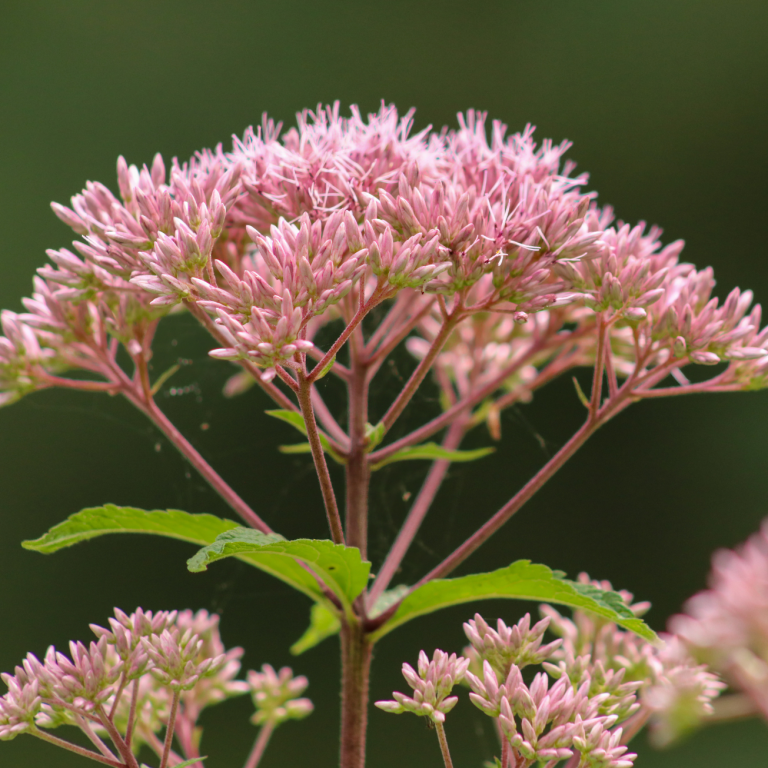UAMS Earth Day Event - April 19th, 2024
If you purchased or were interested in the plants sold at today's events,
they are listed below.
If you have any questions about the plants, please contact me at 501-712-3373.

Baby Joe
Eupatorium
'Baby Joe' Dwarf Joe Pye Weed is the solution for butterfly lovers short on space in the garden. This compact variety grows to a manageable 2-3’ tall and limits its spread. 'Baby Joe' has gorgeous purple blooms that add sweet fragrance to the late-season garden, supplying butterflies, hummingbirds, and bees with vital nectar. Deer resistant.
Blazing Star
Liatris ligulistylis
Dense gayfeather or marsh blazing star is an erect, slender perennial reaching a height of 2-6 ft. The linear, grass-like leaves are clumped toward the base of the plant, but extend up the stem to the showy flower cluster. A tall spike of rayless, rose-purple (sometimes white), closely set flower heads. The purple, tufted flower heads are arranged in a long, dense spike blooming from the top down.
The species name describes the elongated inflorescence, with its crowded, stalkless flower heads. The protruding styles give the flower an overall feathery appearance, hence its alternate name, Dense Gayfeather.


Anise Hyssop
Agastache foeniculum
A 2-4 ft. perennial with dense, terminal spikes of small, tubular, bright blue flowers. Leaves are opposite, oval, toothed and whitish beneath give off the scent of anise when bruised. The sturdy, erect blue giant-hyssop is of the most ornamental native mints.
The genus Agastache describes the flower clusters and is derived from two Greek words agan meaning much and stachys meaning ear of grain.
Culver’s Root
Veronicastrum virginicum
The unbranched stems of Culver’s Root grow 2-6 ft. tall and are topped by several spikes of densely-clustered, tiny, white to pinkish, tubular flowers. The total effect is candelabra-like. Narrowly oval, dark-green leaves are arranged in whorls around the stem.
The genus name, a combination of Veronica and the suffix astrum ("false"), describes this plant's resemblance to the Veronicas. It is the only species in the genus. It can be grown easily in wildflower gardens. The root contains a powerful emetic and cathartic. The common name was to honour Dr. Culver who prescribed the plant as an effective laxative.


Nodding Onion
allium cernuum
Nodding wild onion, is a Missouri native plant which occurs primarily in rocky soils on glades, bluff edges, open woods and slopes in the Ozark region of the State. Plants typically grow 12-18” (less frequently to 24”) tall. Features clumps of flat, narrow, grass-like leaves (to 12” tall) and tiny bell-shaped, pink to lilac pink (occasionally white) flowers which appear in loose, nodding clusters (umbels) atop erect, leafless scapes rising slightly above the foliage. Wild nodding onion is distinguished from most other native alliums by the fact that its scapes crook sharply downward at the top just below the flower so that the flower umbel nods (hence the common name). Blooms in summer. All parts of this plant have an oniony smell when cut or bruised. Although the bulbs and leaves of this plant were once used in cooking (stews) or eaten raw, nodding onion is not generally considered to be of culinary value today.
Purple Coneflower
Echinacea purpurea
A popular perennial with smooth, 2-4 ft. stems and long-lasting, lavender flowers. Rough, scattered leaves that become small toward the top of the stem. Flowers occur singly atop the stems and have domed, purplish-brown, spiny centers and drooping, lavender rays. An attractive perennial with purple (rarely white), drooping rays surrounding a spiny, brownish central disc.


Wild Yellow Indigo
Baptisia sphaerocarpa
Yellow wild indigo goes by several common names, including bush pea, green wild indigo, yellow wisteria, round wild indigo, upright wild indigo, and round-fruited baptisia. It can hybridize with other Baptisia species. The showy yellow flowers can be used in cut flower arrangements. The plant turns an olive-brown color after it has dried.
Woodard Rabbiteye Blueberry
Vaccinum ashei
Woodard is one of the shortest and most spreading of Blueberry bushes, which makes for easier harvesting! Its berries are large in size, light blue in color and sweet if allowed to fully ripen on the bush before picking. Woodard performs better in the southernmost regions as it requires less chilling hours to set buds.


Lesser Calamint
Calamintha nepeta ssp. nepeta
A low-growing garden plant, lesser calamint is a tough, drought tolerant plant that blooms most of the summer with a cloud of white to lavender flowers over mats of gray-green foliage. These plants make great fillers. They also attract a large number of bees, butterflies, and other pollinators. Calamints are cousins to the herbal mints and are very fragrant but do not spread as aggressively.
'Moody Blues Sky Blue' Speedwell - Veronica spicata
'Moody Blues Sky Blue' is a compact plant that produces spikes of medium to light blue flowers all season long. This perennial is great for borders or containers providing the an upward punch of blue. Veronica 'Moody Blues Sky Blue' has good heat tolerance. Remove faded blooms on Veronica for best extended bloom.

We need your consent to load the translations
We use a third-party service to translate the website content that may collect data about your activity. Please review the details in the privacy policy and accept the service to view the translations.

